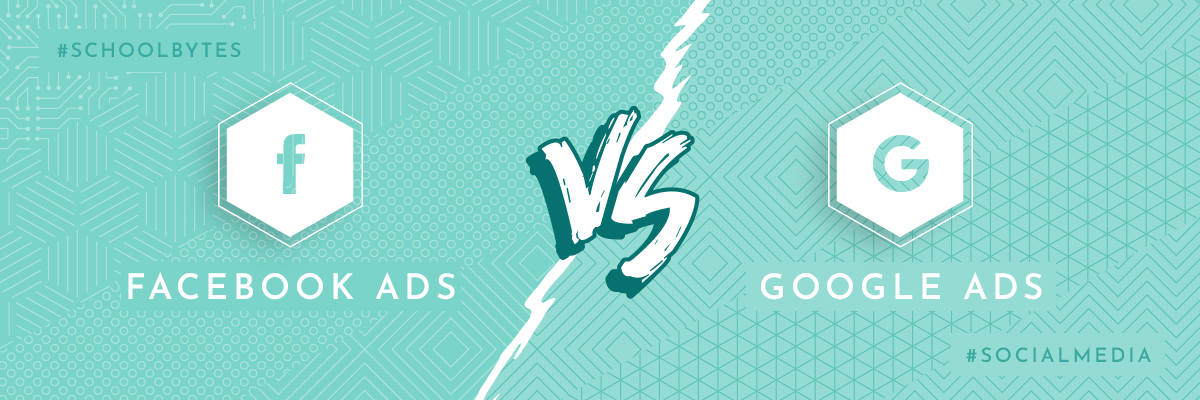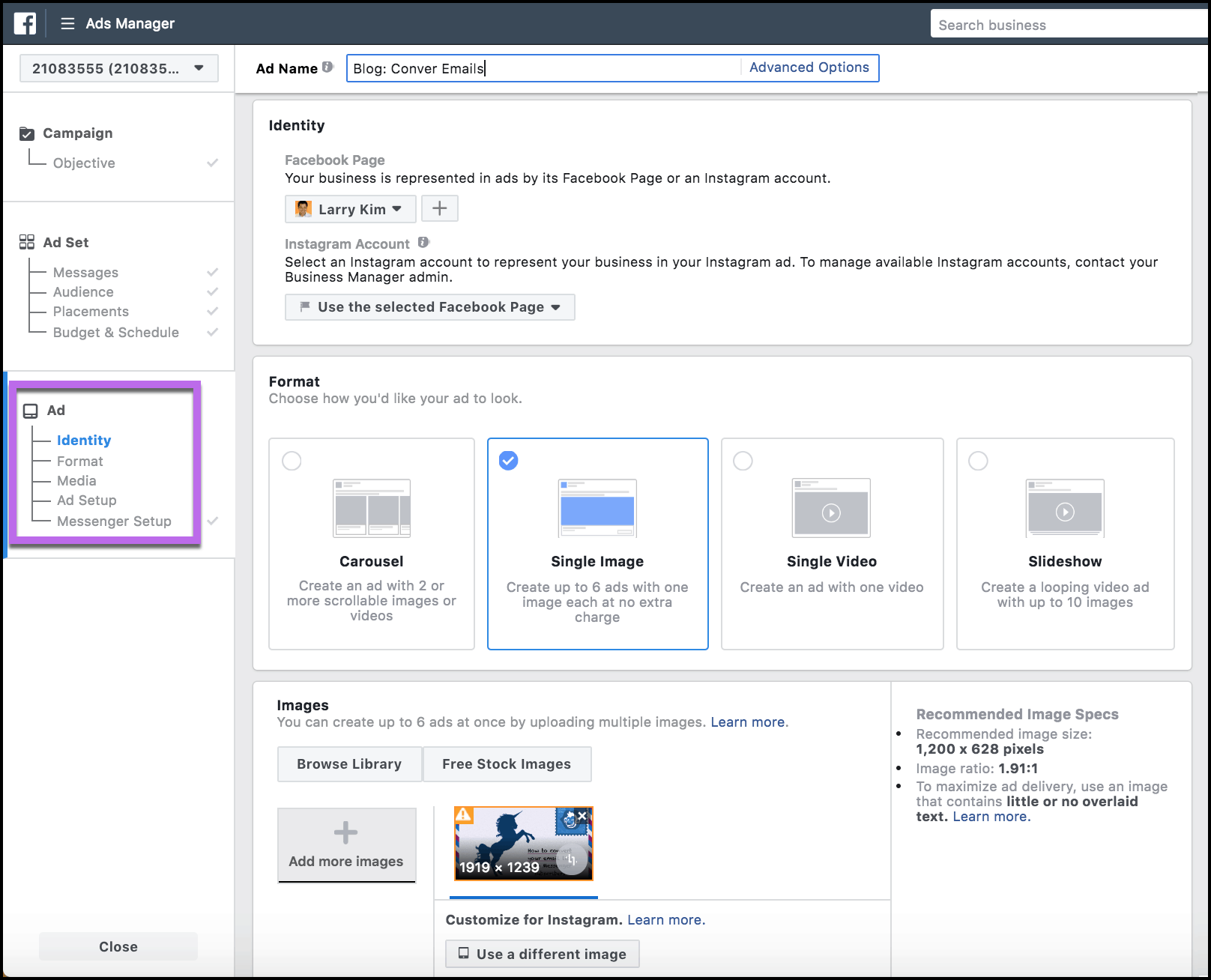Facebook Ads Vs. Google Ads
In our fourth, and final, instalment of our versus series, we’ll be putting two of the biggest digital advertising platforms head to head. Google ads VS Facebook Ads. Which is a more effective way to advertise your school? Let’s find out….
3…
2…
1…
FIGHT!
Round 1: Overview and Ad types:
Google ads:
The Google ads platform has been around for almost two decades, first launching in 2000.
Almost 5 million searches are made on Google every minute, making the search engine the most visited website in the world. This means that the potential reach of advertising on Google is much higher than other advertising platforms.
A Google ad format looks similar to a regular search result in Google, but they appear at the very top of the search results page, with a small badge displaying that it is an ad. They are mainly text based and copy is short and concise.
As well as running ads on Google’s main search platform, advertisers also have the ability to place ads across more than 2 million websites through Google’s Display Network - a portfolio of websites that include advertising space, which reaches 90% of global internet users.
Facebook ads:
Out of the two, Facebook’s ads platform is newer, but it's still been around a while, launching ads in 2007. The social media platforms usage has grown hugely within the last decade, with the average user spending more than 2 hours per day scrolling and engaging with content on Facebook.
Facebook owns a large range of popular social media apps such as Instagram, Messenger and WhatsApp, which means advertising with Facebook also gives you access to users outside of the main Facebook platform.
Ads on Facebook’s family of apps can take many formats, but all look identical to features available on the platforms, such as a news feed item, story or marketplace item. This means that ads on Facebook are highly visual and can include photos and videos with copy.
Round 2: User intent and Targeting
Google ads:
Google ads are targeted on specific search queries, for example placing an ad on the search query “Independent schools in High Wycombe”. This means the ad will be at the top of the results page if a user were to search for this query.
Google ads require users to be actively searching for a specific topic to see your ad. If you can provide exactly the information the user is looking for within their search, they are likely to click your ad and explore your website. This method of advertising has a higher average click through rate of 3.2%, compared to Facebook’s 0.9%.
The key is to research which search terms users are likely to use to find you - Google Analytics can help with this.
Facebook ads:
Facebook’s approach to advertising is slightly different to Google’s. Adverts on Facebook are targeted on specific user demographics and interests, based on data that users provide Facebook whilst using their account. The key is to research current parent and student demographics to inform your campaign’s targeting.
For example, an advert could be delivered to a parent of children aged 11-16, who has recently moved to the local area. This means that users that see the advert are specifically selected as Facebook believes the advert to be relevant to them as an individual. This results in a higher average conversion rate of 9.2%, compared to Google’s 3.8%.
User intent on Facebook ads is also slightly different. Users are passive - they aren’t actively searching for you. By delivering an ad to someone scrolling through Facebook on their lunch break or during the evening, it is informing them about something they may not already be aware of or thought about.
Round 3: Ease of use
Google ads:
The Google ads interface may appear cumbersome at first, due to it being a primarily text and data ads platform.
However, once you get the hang of it, building a campaign can be easier and quicker to setup than Facebook, as there aren’t as many options in terms of media and placements for the ad.
Facebook ads:
The Facebook Ads manager has an easy-to-follow user interface that allows advertisers to build campaigns in a step-by-step process.
Facebook has a lot more options for building a campaign, due to its more specific targeting and variety of formatting and placements. This means that the set up time for an advert on Facebook is typically longer.
As Facebook continues to grow and new features are introduced, the way people use its apps changes at an incredibly fast pace. By introducing new features often, it gives advertisers new and different ways to run campaigns, which could make it hard to keep up with and know which placement and format to choose for your ad.
Round 4: Cost
The cost of running an advert on both Google and Facebook are both dependent on how much you want to spend (the higher the budget, the higher amount of clicks you will receive). You are charged each time a user clicks on your advert. The average Cost Per Click (CPC) on each platform is:
Google ads: £2.15
Facebook ads: £1.38
Advertising on Facebook typically has a lower cost and on average offers a higher conversion rate, although opting for Google’s slightly more expensive option offers a higher average click-through rate.











